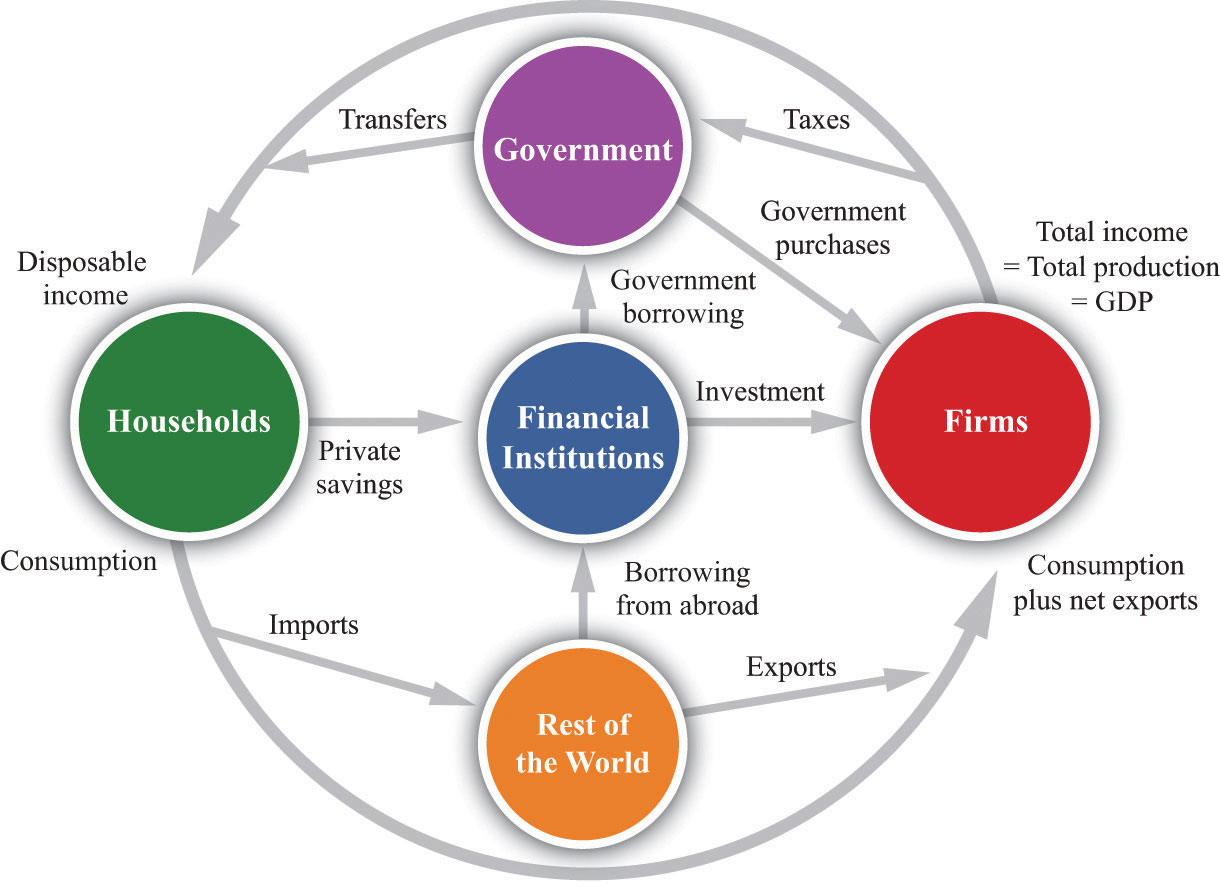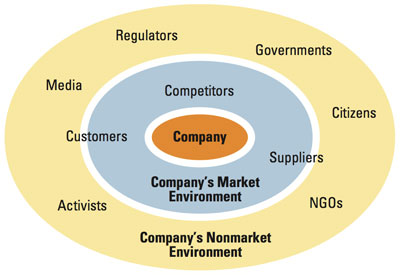Normally one only considers market forces that impact business decisions. But there are some important nonmarket forces like government and society that impact business. Hence, every business needs a market strategy as well as a nonmarket strategy to be successful.
Three institutions for allocation of the resources
- Market (Private Sector): Capitalist system operates on the basis of private property, voluntary exchange, competition, and the profit motive.
- Government (Public Sector): Centralized mechanism in which government provides public services to citizens on the basis of criteria other than the ability to pay.
- Community: Decentralized mechanism for allocating resources where the purpose is to meet certain categories of need rather than to make a profit.
Globalization and De-Globalization
Globalization is a concept when local markets open up for global markets. This impacts the import and export of the country. Whereas in certain cases, the government takes decisions based on National priorities over globalization, giving rise to de-globalization.
Business Environments: Internal vs External
Every business has to deal with external and internal environments. Internal factors are straightforward where the business has control over, for example, its policies, production units, etc. The external environment is the one where the business has no or little control like government policies, cultural differences between countries, laws in different countries, and so on.
Business flow: Inputs — > Production — > Outputs
Inputs can be land, labor, raw materials, etc. A lot depends on external factors in this case.
Production is the process of converting the inputs into outputs. This is the firm’s internal environment which it can control.
Outputs are the output generated by a firm in form of products and services, which it needs to supply to other firms, government, end customers, again external factors play a role.
The Market Economy

The image above shows financial flow in a market economy. In this case, households are engaged with firms by working in them and earning wages, investing in the firm and earning dividends, renting land or resources and getting an income, or directly owning the firms and making profits. Households in turn buy from the firms adding to their income.
Government purchases from firms and adding to revenue. Additionally, Government gets tax from firms and households which adds to its income. The government also gives back to households in terms of various schemes like policies for people below the poverty line.
Firms and households interact with the rest of the world in terms of import and export. this also depends on various government policies.
Market and Non-Market environments in business

Information about the nonmarket environment is important for any firm. One needs to understand what citizens are thinking about the product, what the media is talking about, what are government policies, what are issues raised by NGOs, and so on. Firms need to engage and form coalitions with these units. Firms need to deal with uncertainty around these factors.
The market environment includes direct interactions between firms, suppliers, and customers that involve voluntary economic transactions.
The nonmarket environment is composed of social, political, and legal arrangements and interactions between the firm and individuals, interest groups, government entities.
Non Market strategy
In short, senior management for any business needs to understand that business is not only economic agents but also are social and political beings. Firms are impacted by a lot many actors like laws and regulations, social pressure, activism, and public perception. So any business management needs to make sure to form a non-market strategy, along with a market strategy.
